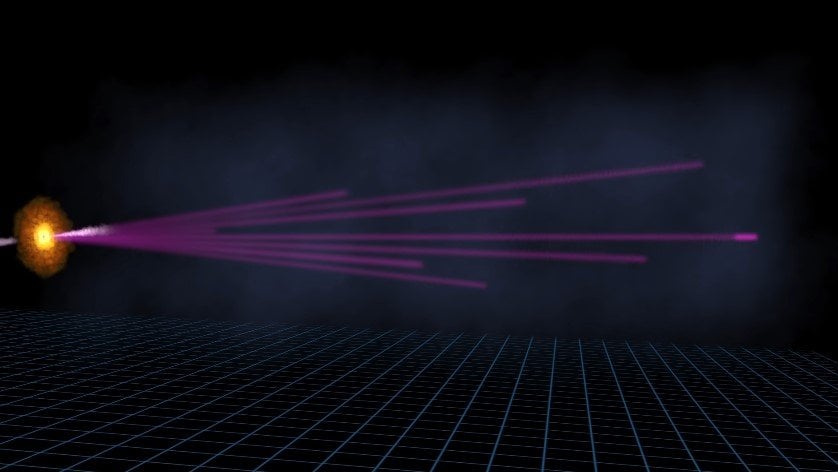Scientists who study the universe want to unveil all its secrets. Researchers believe our universe is 13.7 billion years old and that its first stars began forming when it was a few hundred million years old. Using these theories, scientists from Clemson University attempted to measure all the starlight ever emitted by photons in the universe as we know it.
According to a statement about the study published in the journal Science, researchers estimate there are roughly 2 trillion galaxies and a trillion-trillion stars. To measure all the starlight ever produced, a team led by Clemson astrophysicist Marco Ajello analyzed data from NASA’s Fermi Gamma-ray Space Telescope.
“From data collected by the Fermi telescope, we were able to measure the entire amount of starlight ever emitted. This has never been done before,” said Ajello, lead author of the paper. “Most of this light is emitted by stars that live in galaxies. And so, this has allowed us to better understand the stellar-evolution process and gain captivating insights into how the universe produced its luminous content.”
Although such measurements are extremely difficult and entirely theoretical, scientists say they found that the number of photons, or particles which emit light, translates to 4 x 1084. While this number is astronomical, it’s important to note that the starlight which reaches Earth mostly comes from the Milky Way, while the starlight from outside our galaxy appears dim from Earth. This explains why our night sky is so dark, except from the light from the moon, visible stars, and the faint glow of star nurseries from the center of our galaxy, which is visible only in the darkest spots on our planet.
NASA’s Fermi Gamma-ray Space Telescope was launched into low Earth orbit on June 11, 2008. Over the 10 years, the observatory has supplied great amounts of useful data on gamma rays, which are the most powerful form of light. To measure all the starlight, Ajello and postdoctoral fellow Vaidehi Paliya searched through almost 9 years’ worth of data from 739 blazars.
“Gamma-ray photons traveling through a fog of starlight have a large probability of being absorbed,” Ajello said. “By measuring how many photons have been absorbed, we were able to measure how thick the fog was and also measure, as a function of time, how much light there was in the entire range of wavelengths.”
Blazars are galaxies which host supermassive black holes capable of releasing “narrowly collimated jets of energetic particles,” which can leave their respective galaxies and travel through the universe at nearly the speed of light. If one of these jets is directed at Earth, it can be detected even when it comes from far away. The gamma ray photons which are part of those jets sometimes collide with cosmic fog, leaving a visible trail. Scientists say this enabled them to measure the density of the fog throughout the history of our universe.
“The first billion years of our universe’s history are a very interesting epoch that has not yet been probed by current satellites,” Ajello concluded. “Our measurement allows us to peek inside it. Perhaps one day we will find a way to look all the way back to the Big Bang. This is our ultimate goal.”





